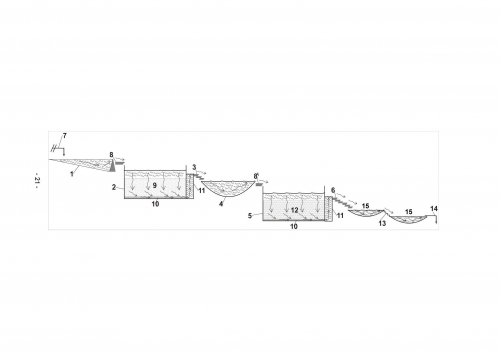Summary of the technology
MUST is an application aiming at fostering citizen engagement in urban planning design process. It relies on advanced interaction functionalities that enable to bridge the gap between the computational/optimization techniques handled by the urban experts on the one hand and the citizen participation in the design process on the other hand. Thanks to a flexible, dynamic, and iterative system, it accompanies urban experts in involving citizens in the early stages of an urban design project. More precisely, MUST covers and supports the dialogue and collaborative decision making during three interactions in the urban design process:
-1st interaction - Capture of the citizens’ requirements in terms of needs and preferences (such as mobility, view, sunlight, noise, services…). MUST enables to classify the requirements in a participatory manner. After this prioritization, the system transforms them into quantified parameters and, through artificial intelligence, it processes them to transform them into exploitable inputs, in particular when dealing with correlated inputs. In this step of the early design process, MUST covers a direct participation process of the citizens.
-2nd interaction - Diagnosis of the site and generation of an organization chart. After a first analysis of the selected site by the urban experts, a first diagnosis is provided to the citizens, as well as a continuous information exchange helping them to understand the decisions made. Thanks to the tangible interfaces provided by MUST, the citizens can collaboratively explore this diagnosis and then allocate the urban spaces in the selected site for the zone. Instant recommendations are being displayed on the tabletop whenever the allocated space does not meet with the requirements. This step of the design corresponds to the organization chart generation, a sketch-based task in traditional design process.
-3rd interaction - Generation of the 3D building typology. In this design interaction, the experts are the main users of the system. Based on the requirements and on the organization chart set in earlier stages, the experts propose different scenarios. Each scenario is evaluated according to different indicators, including the indicators set by the citizens in early stage. This interaction enables a transparent design process where the end-users can evaluate and verify that their requirements are being considered. When relevant to meet citizens’ requirements, MUST also suggests solutions to improve the organization chart by proposing environmental features (such as wind, radiation, CO2 emission…) that are defined through optimization algorithms and machine learning.
This application gives the possibility to designers and experts to focus on other creative aspects in the design while ensuring that the outcomes answer citizens’ requirements.
Details of the Technology Offer
Background:
Existing urban design software and tools accessible for urban planners and architects only help them to increase the capability to generate, modify, simulate and optimize urban solutions. They are not collaborative and do not encourage a participatory design approach as they are mainly focused on their optimization capacities. As a result, while sustainable development advocates citizen-centered approaches, existing solutions are increasing the gap between the experts in urban planning and the citizens by promoting a top-down design approach, where the citizens are considered as external to the design process. This is what MUST aims at tackling.
Benefits:
This solution is combining the citizens’ requirements in a computer-based optimization and artificial intelligence to propose better solutions for urban planning.
In traditional and current solutions, the citizen involvement in the design process is only based on information or consultation and is usually conducted by workshops or design sessions. However, conducting workshops does not guarantee that the design solutions will include the citizens’ requirements. In addition, it was proven that workshops do not enable a transparency in the design process. The innovation in this application is the ability to answer both challenges related to the social turn and sustainability.
MUST increases the accuracy in the early design stage by providing design solutions answering the citizens’ requirements and the environmental issues.
Applications:
MUST and the participative approach for urban planning can be applied in different use cases:
- for the creation of new districts,
- for the refurbishment of brow fields into livable districts,
- for the redesign and reorganization of existing urban spaces.
Two types of users/customers are identified:
- Private sector: Architects, urban planners, real estate developers, who are expressing more sensibility to include participation of citizens in the urban planning process, while also answering environmental challenges associated to each situation.
- Public sector: municipalities, ministries, and local authorities, who are pushing more and more for a participative design for urban planning and encouraging a sustainable development as well.
Opportunity:
Providing opportunities for new pilot projects and different applications:
- Extension to the urban renovation,
- Extension to integrate environmental aspects (GHG emission),
- Application for reallocation of interior layout.
Providing opportunities to transfer MUST to the market:
- As a service or as a technological device for public organisations, architects, city planners willing to involve citizens in the design of their projects
- As a living lab for organisms willing to raise citizens’ awareness regarding the impact of their consumption patterns on the environment.
IP Status:
Know-how based
Copyright
Companies of interest:
This application has a potential to be commercialized through the following industrial profiles:
- Software editors
- Engineering consultancy groups
Desired business relationship
Technology development
Licensing
spin out
Related Keywords


